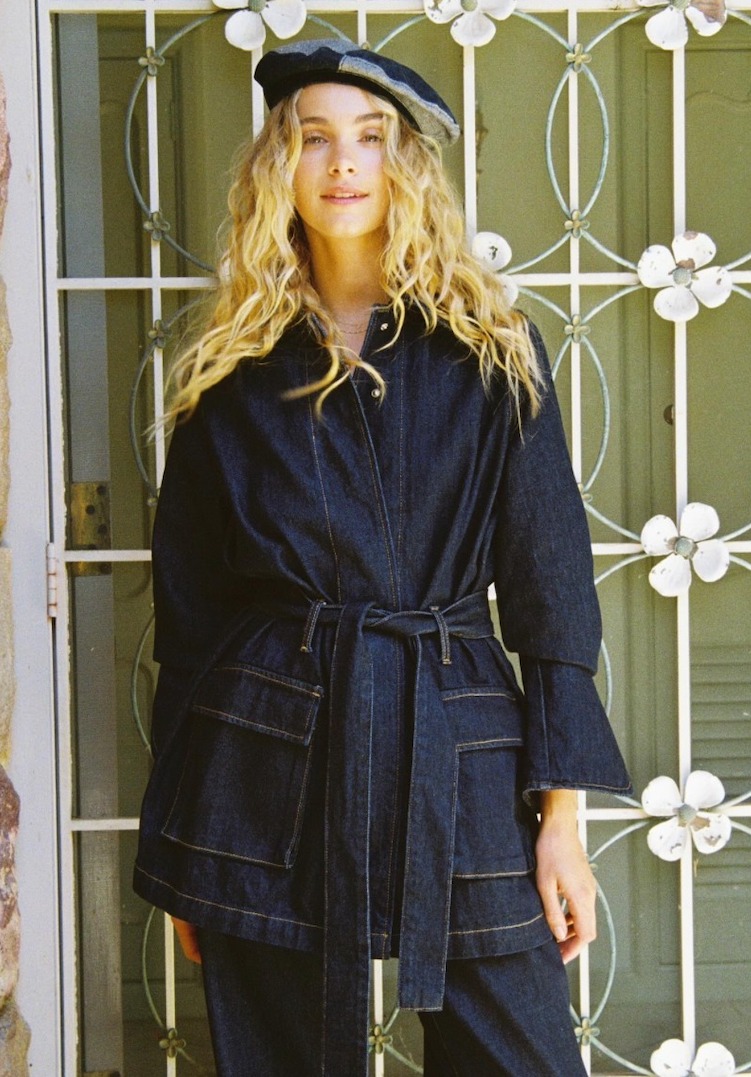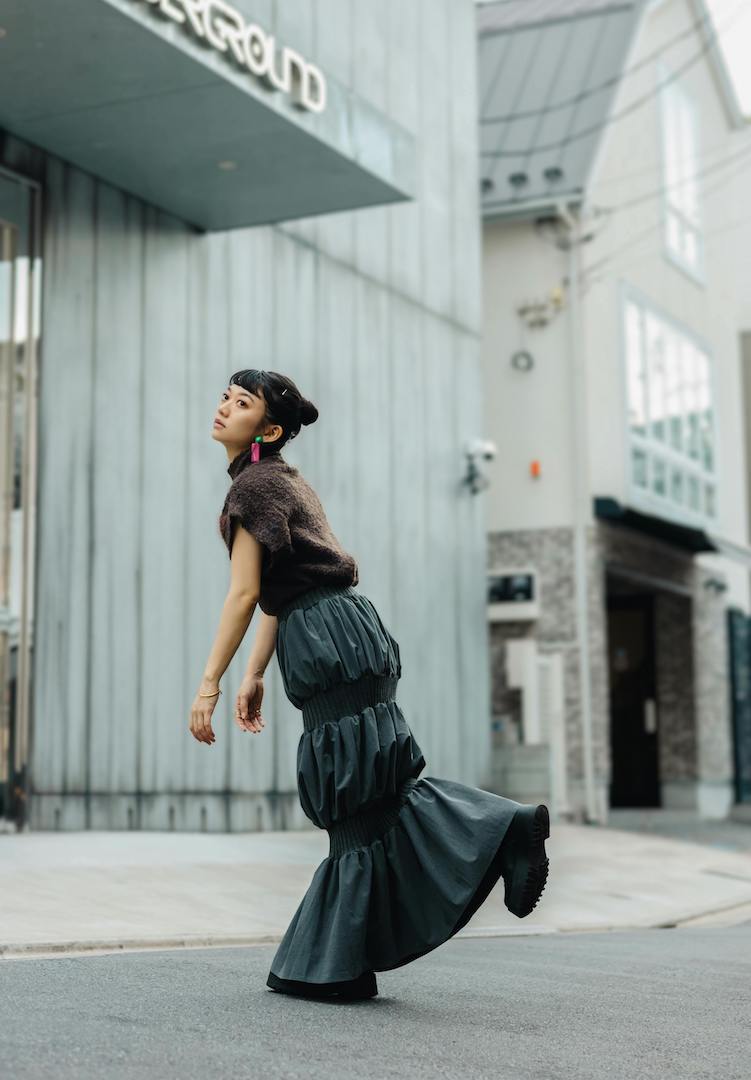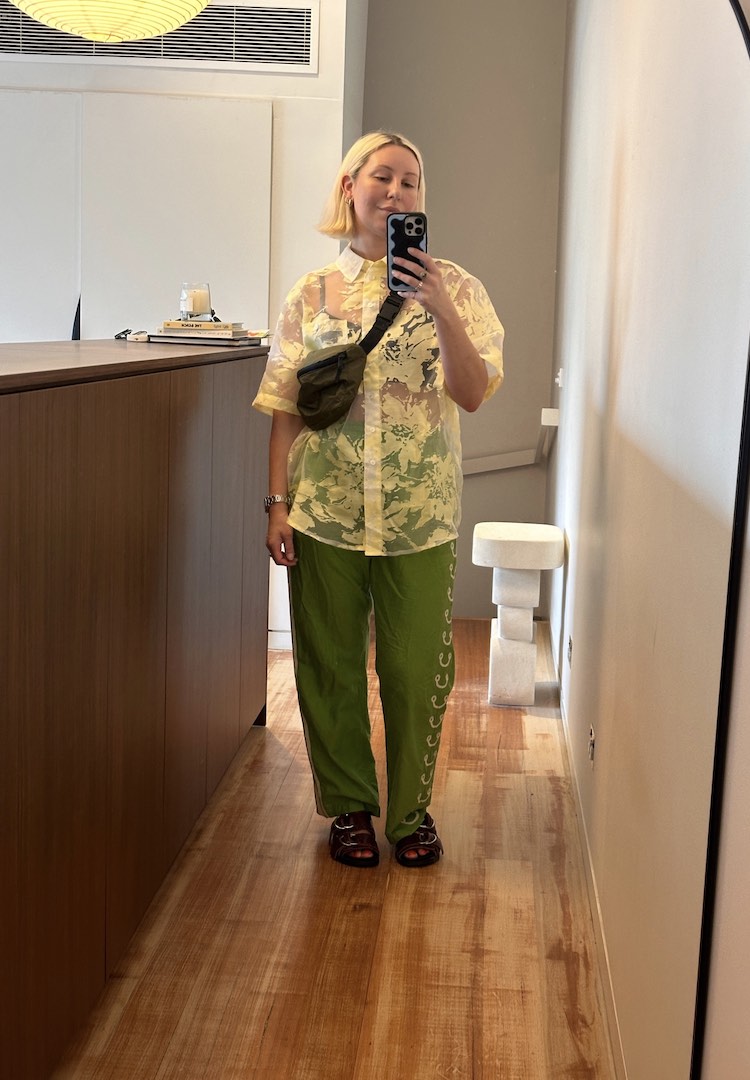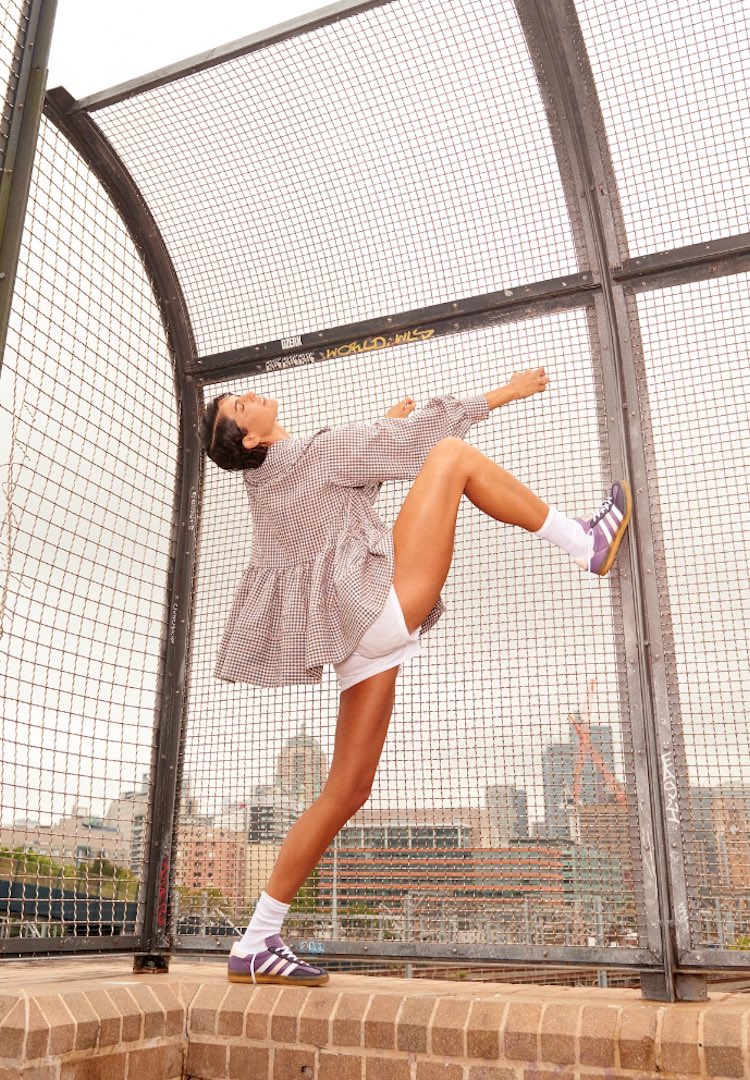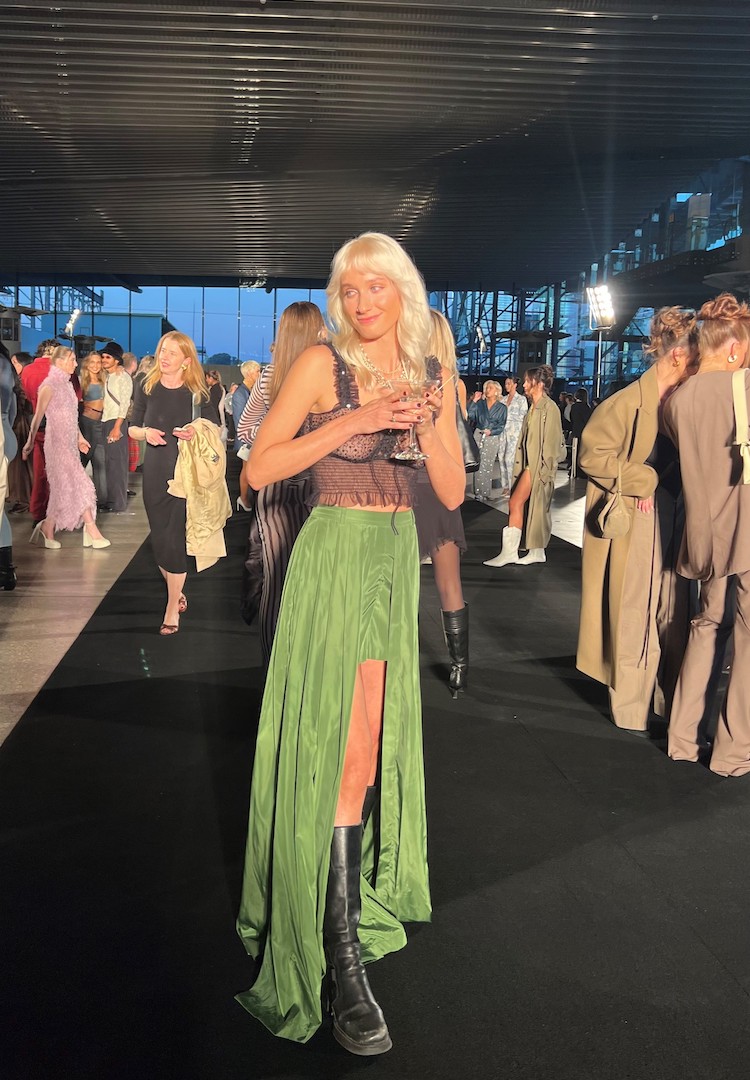An Australian Fashion Trademark has officially launched, here’s what that means
PHOTOGRAPHY BY JASON HENLEY
WORDS By Bianca O’Neill
“More than a trademark, this is an opportunity to showcase the best of Australia’s fashion talent.”
This morning, at the home of fashion week – Carriageworks in Sydney’s inner west – Afterpay Australian Fashion Week‘s first truly post-pandemic iteration kicked off with an important event. It wasn’t, however, the customary big-ticket runway filled with Instagrammable moments and B-list celeb sightings, but rather, a well-attended and dramatically-lit press conference.
Fashion media from around the country were assembled to hear about the latest progress when it comes to one of the most talked-about areas of fashion: buying and supporting local makers. Leila Naja Hibri, CEO of the Australian Fashion Council (the peak body for the Australian fashion and textile industry), opened the event with a sense of burgeoning pride to officially announce Australian Fashion™ – a brand new trademark that now allows fashion brands to seek a new product certification based on a set of several local industry-based criteria.
Discover more up-and-coming local designers in our Fashion section.
The launch of the trademark marks a new era for both the Australian fashion industry and consumers alike, with the aim to elevate those who prioritise local makers in their production process, and drive dollars into the economy here at home instead of offshore.
So what exactly are the criteria? Can anyone get the trademark?
According to today’s announcement, “for brands to become Australian Fashion™ certified, they must meet at least two of the following criteria; demonstrating a contribution to jobs and the local economy, Australian made, Australian owned, majority Australian employees, and Australian tax domiciled”.
The idea is that achieving the trademark will hold enough weight for brands and consumers that labels will move their offshore manufacturing and materials sourcing back home, thereby bolstering the local pre-retail fashion industry and driving the local fashion economy from cradle to grave.
“More than a trademark, this is an opportunity to showcase the best of Australia’s fashion talent,” says Hibri. “For example, when Italian fashion is mentioned, we immediately visualise a distinct brand identity of quality and elegance. In a similar way, we have now identified four key pillars that distinguish Australia’s fashion DNA: effortless style, raw nature, boundless optimism and fearless innovation.
“This, together with the trademark, will help us clearly articulate the unique creativity and the progressive social and environmental values of Australian fashion on the world’s fashion stage.”
Why has it been introduced?
There is no doubt the local fashion industry sustained heavy losses during the pandemic – with stores closed by health mandates, many small and local brands were not prepared for the immediate shift to online, having to pivot their retail strategy within a matter of days. Unfortunately, many consumers were already used to buying online; primarily from fast fashion brands that offer free delivery, easy returns and constantly changing inventory.
Some survived, some didn’t. Some simply held on, bolstered by government grants like JobKeeper. And now, in 2022 as we look to recover, the AFC hopes to capture the attention of the government ahead of a national election to nab some funding to kickstart the industry and propel it into a new golden era of local manufacturing.
“In May 2021,” today’s press release explains, “the AFC was awarded a federal grant to create an Australian fashion certification trademark and campaign to drive demand for Australian brands locally and internationally.”
View this post on Instagram
“Instantly recognisable, Australian Fashion™ will help more customers discover, explore and buy Australian fashion. The result will drive industry growth, more jobs and a greater contribution to the local economy that will future-proof the Australian fashion and textile industry.”
As part of the announcement of the trademark today, the AFC, in partnership with Afterpay, also released the ‘Fashion Evolution: From Farm to Industry’ report. It predicts that the Australian fashion industry is on track to become a $38 billion industry by 2032, and in the short term, “has the potential to generate an additional $1.3 billion, (including $700 million from additional investment, $500 million in exports and $100 million in private consumption and government expenditure).”
These are huge numbers that are unwise to ignore – but achieving them is another matter entirely.
What does this mean for Australian fashion?
Somewhat prophetically, Hibri opened her speech with an anecdote, no doubt addressing many of our thoughts when we read the brief, embargoed press release ahead of the launch.
“In 2020,” she told us, “right after COVID hit Australia and the world, I was invited to attend an emergency roundtable where the Minister of Industry at the time wanted to know how we could expand local manufacturing in the fashion industry in Australia. My first response was: ‘What local manufacturing?’”.
In Australian fashion, we tend to import a lot: raw materials, garments and fixings are created offshore, and even completed garments simply for resale. The new trademark, which requires concrete investment from brands into local industry, hopes to flip this narrative, making Australian fashion a key export to bolster the flailing economy.
It’s a lovely sentiment – that creating a world-first trademark prioritising Australian made and sourced over all else will magic away all the issues brands currently experience, as if, up until now, they never tried, desperately and repeatedly to do so – but a sentiment it solely is, one that has its basis in a form of trickle-down economics. (For those familiar with the term, I’ll reserve my own feelings about whether that actually works for another time.)
View this post on Instagram
I have spoken frequently in past columns about the need to focus on a more sustainable future for our local fashion industry – and often, the easiest ‘big win’ for increasing sustainability, on paper, is the reduction in both transport and raw material production. The trademark hopes to focus on eradicating these two huge contributors to environmental devastation by driving local industry, but unfortunately, there are many complex and wide-ranging barriers to achieving these two aims for many local labels – some of which I talked about here.
The hope is that the appeal of this new trademark to Australian consumers will be enough to drive brands toward local makers, with the aim of creating a wave of demand for Australian-based manufacturers and raw materials producers, which will then have a knock-on effect, encouraging growth in the sector.
The report is based on four key policy asks, detailed as below in the press release:
- Promote the Australian Fashion™ campaign locally and globally to turbo-charge local and export earnings
- Build future manufacturing capability, boosting the demand for Australian fashion and textiles, including for cotton and wool fibres and their derivatives
- Boost women’s economic security by developing career pathways for women throughout their working life, addressing current and future industry skills gaps and opportunities
- Build a workable and sustainable circular economy across Australia’s clothing, uniforms and textiles supply chain
“So the question is, what do we need to do for our industry to achieve this?” asked Hibri at today’s conference. “Well, we need government to work with our industry, and support us… this is an industry that is powered by women. So, we look forward to working with the Australian Government. The next Australian Government,” she added, to wry audience laughter.
With an election looming, now is certainly the time to be asking for favours – especially when those favours could contribute $10.8 billion in economic gain, and create an additional 86,000 jobs over the next ten years. But the question is: does the government care enough about the fashion industry to invest the $69 million they’re asking for? Or perhaps, the more pertinent question is: do taxpayers care enough?
It’s no secret that Aussies are in love with fast fashion. Zara, H&M and Kmart are frequently packed with more customers than I’ve ever seen at any local label’s brick-and-mortar outlets. So, is the Australian fashion brand strong enough to influence consumer purchasing?
Will the trust that comes with certification override current consumer habits that, in the age of ultra-fast fashion, tend to drive them toward price rather than quality? With a Shein pop up set to test Melbourne shopper’s appetites for incredibly unsustainable clothing in the coming weeks, only time will tell.
Bianca O’Neill is Fashion Journal’s Senior Industry Columnist. Follow her at @bianca.oneill.
To read more or to apply for the Australian Fashion™ visit australianfashion.org.





